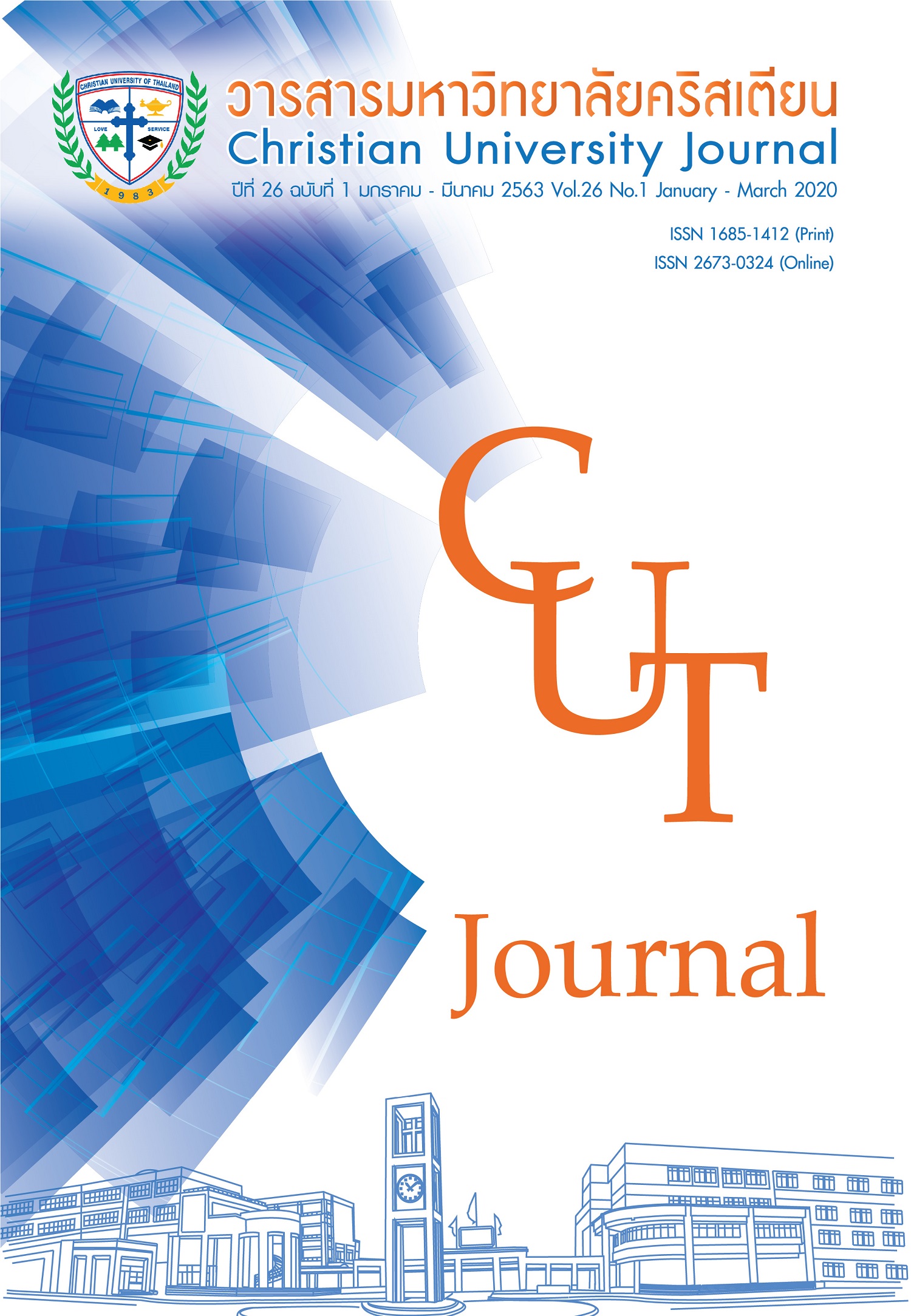The Prevalence and Factors Related to Food Consumption Behaviors of Junior High School students of Kamalasai School, Kamalasai District, Kalasin Province
Keywords:
Prevalence, Health literacy, Food consumption behaviorsAbstract
This research study is an analytical research with a cross-sectional education model The objective of the study was to study the prevalence and factors related to food consumption behaviors of Junior High School students of Kamalasai School, Kamalasai District, Kalasin Province. By simple random method the random sample consisted of 262 people. The instrument was a questionnaire. The quality of the equipment was checked. Content accuracy and reliability Data were analyzed using descriptive, multiple logistic regression. The results found that 47.3 percent had a health literacy on food consumption in overall was at a medium level (x̄=2.35, S.D.=0.54). When considering from each aspect, participants had medium level cognitive understanding (x̄=2.73, S.D.=0.33) accessing health data and services, most had a medium level ( x̄=2.16, S.D.=0.62). communication skills, most had a medium level (x̄=2.12, S.D.=0.58) In decision-making aspect, most had a medium level (x̄=2.30, S.D.=0.62). In the aspect of media-literacy, most had a medium level (x̄=2.70, S.D.=0.46). In self-management aspect, it was at a medium level (x̄=2.10, S.D.=0.46). The result of the prevalence and factors that has a relation between health literacy and good food consumption behaviors found that health data and health services (AOR=2.30, 95%CI=1.40-3.84; P-value<0.001). Moreover, those with self-management had 1.85 times better than those with poor self-management (AOR=1.85, 95%CI=1.13-3.04; P-value=0.014) and Receiving useful food information through television advertisements (AOR=1.55, 95%CI=1.94-2.54;p-value=0.002). There should be a promotion of good self-management for promoting good health of the Junior High School students. Utilization of research results: create a project or provide knowledge, such as television media, in order to increase the ability to access food intake to benefit the body.
References
Adisa Sungkathip, Suwanlee Lowirakorn. (2017). Food Consumption Behaviors and Nutrition of Lower Secondary Students of Kud Pladook, Chuenchom District, Maha Sarakham Province. Science and Technology Journal Ubon Ratchathani University, 19(1),178 - 189.
Health Education Division. (2011). Development of Tools for Measuring Health Intelligence on Obesity of Matthayom 3 students (first stage).(Research Report). Bangkok: Ministry of Public Health.
Health Education Division. (2018). The Promotion and Evaluation of Health literacy and Behaviors of Children Who Are 7-14 Years Old and Those Who Are Over 15 years old. Bangkok :Ministry of Public Health.
Hsieh, F.Y. (1989). Sample size tables for logistic regression. Statistics in Medicine, 8, 795–802.
Institute for Population and Social Research. (2017). Health Status of Thai People 2017. Nakhon Pathom: Amarin Printing and Publishing
Institute for Population and Social Research. (2018). Health Status of Thai People 2018. NakhonPathom: Amarin Printing and Publishing.
Kitpapon Srithanee. (2017). Relationship between health literacy and quality of the eldery life at the central part of the north-east Thailand. Journal of health system research. 11(1) : 26-36
Montira Juntavaree, Peyanut Juntavaree. (2019). Smoking Behaviors of the Senior High School in Kantharawichai District, Maha Sarakham Province. Ratchaphrurk Journal, 17(3), 83-90.
National Statistical Office. (2013). The Report of Annual Statistics of Thailand 2013. Bangkok, Ministry of Information and Communication Technology.
Nutbeam, D. (2000). Health Literacy as a public health goal: a challenge for contemporary health education and communication strategies into the 21st century. Health Promotion International. 15(3),259-267.
Nutcharin Sutthiwarotmakul. (2018). The relationships between health literacy, family and peer influences and eating behavior of school-age children.(Master's Thesis). Burapha University, Chonburi.
Phusit Prakongsai. (2559). Thai Public Health 2011–2015. The War Veterans Organization Printing: Nonthaburi, Strategy and Planning Division, Ministry of Public Health.
The Secondary Education Service Area Office. (2019). Report of The Secondary EducationService Area Office 24 2018. Bangkok; Ministry of Education.
Weerachai Nuanchai, Sirikul Aumpon, Krantarat Boonchuaytanasit et al. (2017). Research Report on the Development of Food Consumption Behavior of Students from Oryor Noi Schools to Reduce Risk Factors of Non-Communicable Diseases (NCDs) in 2017. Food and Drug Administration, Ministry of Public Health.



